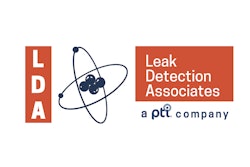Quick hits:
- Hybrid audits are gaining in popularity. Part of the audit is performed remotely while a local auditor conducts on-site business.
- These limit staff and research exposure.
- Choose filesharing wisely, and plan video feeds for remote viewing.
- Coordination is key between sites to ensure schedules accommodate breaks, time zones, and more.
Related to this episode:
- Looking for More Guidance on Remote Audits? Attend PDA’s Workshop Apr. 8, 2021.
- Contract Packagers/Manufacturers Pivot During Pandemic
- How To Broaden Use of Remote Access
- COVID-19 Provides a Push for Digital Innovation
- Download PMMI's Cybersecurity White Paper to learn the most important actions you can take now to avoid a costly cyber attack.
 | Read the transcript below: |
Today we are talking about tips for switching to hybrid or virtual audits. These tips apply to you whether you are a pharmaceutical manufacturer or you are on the contract side of things.
Recently I covered a story where contract research facility, The Jackson Laboratory, otherwise known as JAX in California, was hybrid audited by their client out on the east coast. In this case it didn’t make sense for the client to send someone across the country, especially when COVID-19 was exploding on the East Coast and it didn’t make sense for someone to potentially expose the employees or the animals at JAX. The client was able to perform a document audit remotely, while a more local auditor conducted an onsite audit in California.
All parties involved thought this hybrid audit was successful and they offered some tips to make the process go a little bit more smoothly.
First, think about how you will perform file sharing. In this case, JAX opted to use Box for their file sharing. Box is a platform they had already integrated into their site and was already vetted by IT. They had to move quickly, so it didn’t make sense for them to add in a new platform or tools for filesharing when they already had Box. Additionally, they really liked the way they could easily turn on view and edit permissions, and then turn them off when the times were appropriate. You really want to think about how you will be moving documents safely and securely.
Second, you really want to make sure there are accommodations for the onsite auditor to view areas as safely as possible. We know that especially in labs and manufacturing sites there is not always room to socially distance, so you want to think about relying on your gowning and masking procedures, but also think about any sort of tools or extras that an auditor might need to see things. In this case the auditor mentioned they were shorter in stature, so JAX needed to provide a stool in order for them to see a certain procedure to see appropriately and safely. It was really important that they had the tools ready to ensure the auditor was comfortable.
Third, consider what kind of cameras you are going to use. JAX made use of their existing ceiling mounted cameras and, going a step further, auditors were able to remotely observe cell culture procedures in-depth via JAX laptop cameras. They had a side-by-side view of these procedures via laptops.
Fourth, think about budgeting prep time. Uploading documents takes time, and it is also important to offer a facility plan. Schedule in a layout meeting to take the place of what would normally be a tour where someone just comes in and gets the layout of the facility. You want people to feel like they are there as much as possible.
Fifth, schedule breaks. Being on camera all day is exhausting. Everyone has Zoom fatigue, it can be really hard to be in an eight hour, or longer, meeting where you are constantly needing to sit up straight and you can’t just get up and freely get a glass of water. Make sure you are scheduling in bio breaks. Also consider time zones when you are scheduling things. Lunch break out in California is going to be 3pm in Florida. It takes a lot of preparation and probably some accommodation on both sides to really make it work with the various time zones and the zoom setup and fatigue.
The team at JAX said that remote or hybrid audits are likely to continue after the pandemic and they are kind of becoming the norm right now. Auditors get to review things ahead of time and they come in with their questions, versus sitting in a war room and reviewing in person. It also saves on safety, so you aren’t bringing someone into your facility who has just been on a plane and you are reducing that exposure. It saves also on travel costs and jet lag. There’s more detail in the story, so if you want to check that out, just visit the URL here.





















